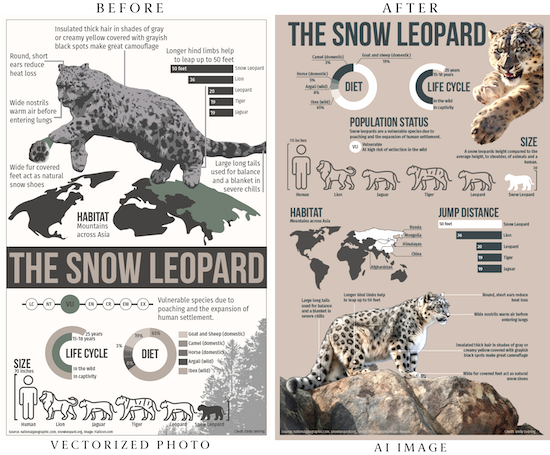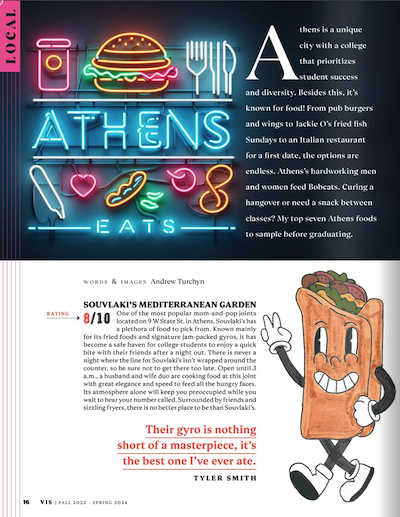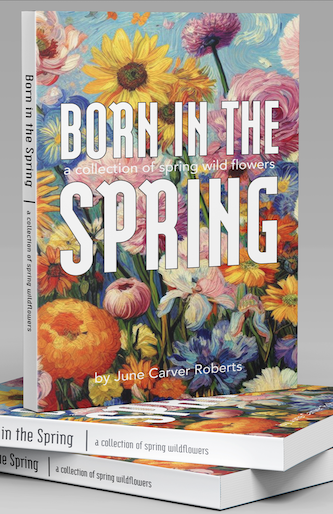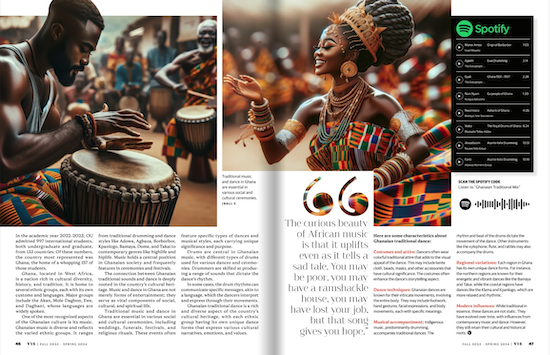With Artificial Intelligence dominating headlines and generating varying opinions about its impact on our daily lives now and in the near future, a newly established student group, the Society of AI Learners and Designers (SAILD), has carved out a space that welcomes all perspectives. In its second semester, SAILD has already established a presence on campus and will present at Ohio University’s AI Symposium showcase on Feb. 28.
Classroom origins
SAILD formed in the fall of 2023 with the intent of exploring AI and its potential to transform the future. The group’s advisor is Adonis Durado , assistant professor in the School of Visual Communication (VisCom). Durado is a visual journalist, art director and design manager with over 20 years of professional experience.
Durado said he encouraged his students, many of whom were enrolled in his Illustration II: Art Direction class fall semester, to form SAILD because he believed they would benefit from exposure to the new technology. The final project for the class was a magazine called VIS, dedicated to exploring AI.
To create the magazine, the students made use of some of the AI tools that exist already (including ChatGPT, Bard and Midjourney). Durado sees SAILD as the ideal space to further explore the platforms and their applications, especially in a design context.

In Durado's Infographics class, students designed two graphics: a vectorized photo of a leopard (left) and an AI image (right). "This clearly shows how AI can enhance the visual impact of a layout," Durado says.

The above spread from VIS magazine is AI-generated.
Durado compares this stage of generative AI’s development to his experience in the early days of digital design.
“I heard a lot of designers and illustrators say [at the time that] digital design wasn’t true art,” Durado says. “But you can see it’s gained currency in the modern day.”
He connects that early experience to the conversation surrounding AI.
"There’s been a lot of resistance and people think [AI] has negative effects,” Durado says. “The ethical side has also generated a lot of conversation and discussion. But ultimately, like digital design, completely ignoring AI may be doing ourselves a disservice, even if one doesn't agree with the technology completely.”
Durado believes AI isn’t inherently bad, even if its prospects and evolution are daunting. Ultimately, he says that the impact of AI depends on its use and application, which is why he encouraged his students to create SAILD. It serves as a space where people can engage in discussions about AI before the wave of the new technology gets even bigger.
Durado envisions the group learning about using technology in design and visual communication and also considering the ethical implications of AI at large.

Durado's Art Direction class included a book design project. The above cover was AI-generated.

Articles in VIS magazine incorporated AI-generated photographs.
Navigating conversations
Unlike organizations that might focus exclusively on the enthusiasm around a new technology, the members of SAILD are determined to make it safe to discuss all perspectives on AI. The community currently comprises 35 students from the Scripps College of Communication, a notable number for an organization that began only last semester.
Aubrey Cline, SAILD’s president, says the enthusiasm among members is encouraging.
“It’s been refreshing to get students interested in AI and navigate the conversations within the group,” Cline says. “Stepping into the president role has allowed me to learn new things and hear different perspectives on AI."
She recognizes there is growing anxiety about AI and hopes SAILD can be a place for people to have conversations that might allay their fears as everyone continues to figure the technology out.
“I think the ideal big picture would be to have a bigger society full of people from different walks of life in different capacities, with different skills to diversify the conversation, get insight into varying perspectives and look at the applications of technology in science, engineering, health, art, and other fields,” she says.
At its core, SAILD is interested in education. The members will develop skills to navigate generative AI and teach others.
“Technology can only progress,” Cline says.
Sharing knowledge
Several SAILD members were enrolled in Durado’s class, Illustration II - Art Direction, during fall semester. One of the magazine’s stories was created and generated completely with Artificial Intelligence. The story and its implications offer a glimpse of the possibilities ahead for SAILD as its members strive to understand what doors AI can unlock and how to ethically apply the technology across industries.
VIS Magazine will be the focus of the SAILD members’ presentation at the University‘s AI Symposium on Feb. 28 . The presenting group, including the student editor of VIS, Julia Greenwood, plan to present about how they incorporated AI into the issue’s production process.
The AI Symposium will include 15 speakers, with keynote speeches from OHIO alumni Paul Roetzer, the founder and CEO of Marketing AI Institute, and Natalie Zmuda, the director of product management for Amazon.


